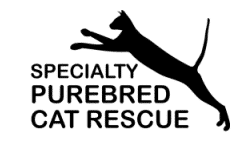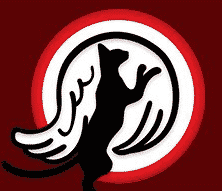Featured Breed
Prudent Pet Loves Sphynx Cats
The modern Sphynx can appear as a much older breed than 1966.
We often look at these creatures as prehistoric; but in fact, they were only created in the late 1960s up in Canada. Even though they are distant descendants of the Russian hairless cat, the current American and European Sphynx have no relation to the Russian breeds.
It’s no secret, the first thing that stands out when looking at this cat is their lack of fur. However, many don’t know this isn’t natural. In many cats, hairlessness is a natural genetic mutation from their environment, but with the Sphynx, they were selectively bred to have no fur. Although they may appear bald, they have a thin layer of fuzz on their skin that feels similar to suede.

- BRED FOR:
- Domesticated Cat

- ORIGINS:
- Toronto, 1966
A fluffy kitten
About Sphynx Cats
The elegant Sphynx is one of the most recognizable cat breeds in the world with their hairless body and professional stature.
Their long, narrow body and webbed paws add to the classiness of this modern breed. Due to their hairless body, the Sphynx loses a lot of body heat, making them warm whenever you touch them. This is why you’ll find your Sphynx cat cuddled up against a heater or perched in sunny areas of your home.
Although they might not look athletic or energetic, the Sphynx is one of, if not the most, active cat breeds in the world. They love bouncing and running around your home, thus burning a lot of calories in the process. Due to their high energy level and ability to shed calories quickly, the Sphynx needs to be fed much more than the average cat. Their fast metabolisms break down calories quicker than other breeds, making them an expensive kitty to feed.
Sphynx Health
As a breed, the Sphynx generally has more health problems than other cats.
The Sphynx runs into many issues with their fur and coat, simply because it is nonexistent. The outer skin on their body can cause heart disease and respiratory issues.
If they’re kept in cold weather with no sense of heat, these symptoms and issues can worsen. They also have minor issues, such as vision and digestive problems, but those are unrelated to their coat.
Major Sphynx Problems
- Heart Disease (Hypertrophic cardiomyopathy)
- Respiratory issues
Minor Sphynx Problems
- Digestive Problems
- Ocular Infection
At a glance
Sphynx Characteristics
Height
- Females: 8 - 10 inches
- Males: 8 - 10 inches
Weight
- Females: 7 - 9 pounds
- Males: 9 - 11 pounds
Food
- 1-2 cups per day
Activity Level
- Highly Active
Covering your Sphynx
Pet Insurance for Sphynx Cats
These noticeably bald kitties may even live as long as their fully domesticated counterparts – approximately 13 to 15 years.
Pet insurance for Sphynxes is generally comparable in price to pet insurance for Siamese cats. Both are elegant breeds with different stuff to offer, but pet insurance is needed for both of them because of their many issues.
Since this breed could develop health issues over time due to their longevity, it is important to get pet insurance for Sphynxes within the first year.
Rescue a kitty
Sphynx Rescues
Looking to rescue a Sphynx cat? Here are some of the top Sphynx rescues in the country:





